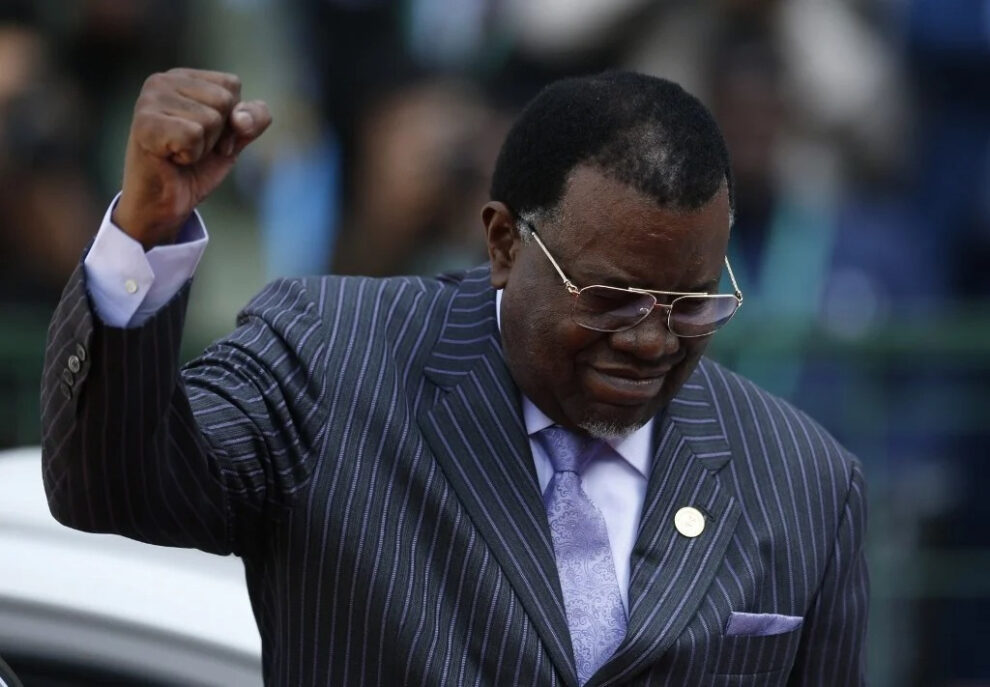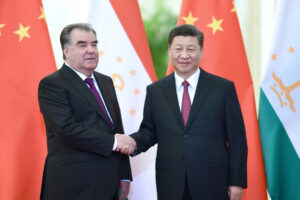Under Geingob’s leadership, Namibia has earned a reputation for good governance, which has contributed to continued investment and exploration since the 2022 discoveries.
Shortly after massive hydrocarbon discoveries were announced in Namibia in 2022 – the first major finds to take place in that country – Namibian President Hage Gottfried Geingob was a picture of cautious optimism. Geingob understood the economic and energy security benefits oil and gas could deliver, but he also recognized that they weren’t guaranteed. It would be up to Namibia’s leadership to ensure Namibians realized those benefits.
The president has not hesitated to step up to the challenge. Under Geingob’s leadership, Namibia has earned a reputation for good governance, which has contributed to continued investment and exploration since the 2022 discoveries. The country has also committed to using a portion of its natural gas resources to meet domestic needs, which will bolster Namibia’s energy security, paving the way for economic growth and industrialization.
At the same time, Namibia has been building a green hydrogen sector that will lead to even more jobs, business opportunities, and access to electricity for Namibians.
These are some of the reasons the African Energy Chamber’s Board (AEC) has selected Geingob to receive our 2023 Lifetime Achievement Award this October during African Energy Week 2023 in Cape Town.
The award recognizes African leaders who have taken bold steps to improve the socioeconomic development and the well-being of Africans by accelerating energy sector growth in our continent.
President Geingob, without question, fits that description.
Dedication to Service
Geingob has been Namibia’s president since March 2015. He is also the president of Namibia’s ruling SWAPO Party (The South West Africa People’s Organisation), which formed as a liberation movement in 1960 when Namibia (then known as South-West Africa) was under the administration of South Africa.
Geingob received his early education in Otavi before attending the Augustineum College, where he completed training as a teacher in 1961. He has a bachelor’s degree from Fordham University, a master’s degree in international relations from the New School for Social Research in New York, and a doctorate from the University of Leeds.
In 1964, Geingob was the SWAPO representative at the United Nations and to the Americas. He went on to be the founding director of the UN Institute for Namibia, an educational body set up by the United Nations Council for Namibia in 1976. Later, Geingob was elected chairman of the constituent assembly that was responsible for drafting the Namibian constitution.
Geingob became the first Prime Minister of Namibia in 1990, when the country gained independence from South Africa, and served until 2002. In 2007 and 2012 he was appointed vice-president of SWAPO. He also served as Namibia’s minister of trade and industry. In 2012, Geingob was re-elected as prime minister and served in that role until 2015.
In Geingob’s run for president, he received more than 86% of the votes, a tangible sign of the respect and confidence he earned from his fellow Namibians.
Namibian Energy: Leaving Nothing to Chance
One thing that sets Namibia apart from other African states with petroleum resources is how quickly the country went from a country with minimal oil and gas activity to a major exploration hot spot.
Prior to the country’s recent discoveries, only about 15 wells had been drilled, and none of them yielded commercial quantities of oil or gas.
Then, between 2022 and 2023, five major offshore discoveries were announced. They were Venus-1X in PEL 56, made by TotalEnergies EP Namibia and its associates, along with Graff-1, Jonker-1X, La Rona-1, and Lesedi-1X in PEL 39, jointly made by Shell Namibia Upstream BV and its collaborators.
Certainly, Namibia’s strategic location on the southwest coast of Africa and the sheer volume of the discoveries -at least 11 billion barrels of light oil and as much as 8.7 trillion cubic feet (TCF) of natural gas – contributed to the immense interest in Namibian exploration that followed.
But, again, there was no guarantee that everything would go smoothly after the discoveries. There was still the risk that negotiations and project development would stall, that red tape or negative experiences would erode oil companies’ interest in ongoing exploration, or that Namibia would fail to capitalize fully on its newly discovered resources.
Geingob has taken a proactive approach to avoiding these stumbling blocks, greatly increasing the likelihood of positive outcomes for his country and his people. In fact, one of the first things he did after the discoveries was to talk with other African oil and gas-producing states in hopes of learning from their experiences.
Also important, Namibia has made it a priority to offer a business-friendly fiscal regime and legal framework. In its 2022 Investment Climate Statement for Namibia, the U.S. State Department notes that Namibia is known for maintaining a positive investment climate that includes political stability, an independent judicial system, protection of property and contractual rights, good telecommunications infrastructure, and an expanding transportation infrastructure.
“I would add that, by concentrating on market-focused policy, partnerships with regional and global players, and a commitment to local content and beneficiation, Namibia and its president have demonstrated an unwavering commitment to leveraging the country’s energy resources for economic growth and a sustainable future for the region”. Stated NJ Ayuk, the Executive Chair of the African Energy Chamber.
Those efforts have been yielding fruit. Namibia has attracted such major international investors as ReconAfrica, Chevron, ExxonMobil, Woodside, and Galp, among others.
Geingob announced in March that foreign direct investment (FID) in Namibia was expected to reach N2.5 billion (approximately USD133.1 million) this year. The country saw N13.2 billion (USD703.1 million) in FID during the first nine months of 2022, the president added.
Geingob also should be lauded for Namibia’s natural gas agenda. He recognizes that natural gas has the potential to help African countries eradicate energy poverty through gas-to-power projects and that it can be monetized to help build infrastructure and grow the economy. Namibia is making significant strides in these areas. One example is the country’s plans for the offshore Kudo gas field in the northern Orange sub-basin. Namibia plans to build a floating platform there and a pipeline to move the gas from Kudu Field to Elizabeth Bay, where it will construct a gas-powered plant capable of generating up to 420 megawatts (NW) for Namibians and supply regional markets.
We’ve also been pleased to see that Namibia has launched a sovereign wealth fund to help bridge the country’s infrastructure financing gap. The fund was launched with N262 million (USD16.3) in 2022. The plan is for Namibia to invest 2.5% of royalties from all mineral resources sold along with tax revenues and money raised by divestments from its investment holdings.
A Green Energy Superstar
Namibia’s efforts to develop its renewable energy sector have been equally impressive.
The country has been working in recent years to harness its solar and wind power to produce green hydrogen, which is generated from renewable energy sources, and position itself as a green energy hub.
As we’ve said in the past, several African countries, including South Africa, Mauritania, and Egypt, are capitalizing on the benefits of green hydrogen. What stands out about Namibia is its emphasis on global collaboration: The country is working closely with German partners to drive its green hydrogen sector and unlock energy access and industrialization opportunities.
Not only can monetizing renewable energy through green hydrogen provide regional energy access, but it also will contribute to broader socioeconomic growth in Africa.
Also promising is Namibia’s USD10 billion green hydrogen project, which is projected to generate two million tons of green ammonia annually for regional and global markets once it begins operations by the end of this decade. Earlier this year, Namibia entered a feasibility and implementation agreement with green energy supplier Hyphen Hydrogen Energy to move the project forward. The project will harness approximately 3 GW of electrolyzers fueled by 7 GW of renewable energy sources.
President Geingob has also kickstarted several green hydrogen pilot projects.
As we stated earlier this month, when we announced that Geingob will be the keynote speaker during African Energy Week, Namibia stands as a shining example of what can be achieved through visionary leadership and a commitment to sustainable development. Under President Geingob’s guidance, Namibia’s energy sector has become a beacon of opportunity, attracting major investments and driving innovation.
Source : YAHOONEWS
















